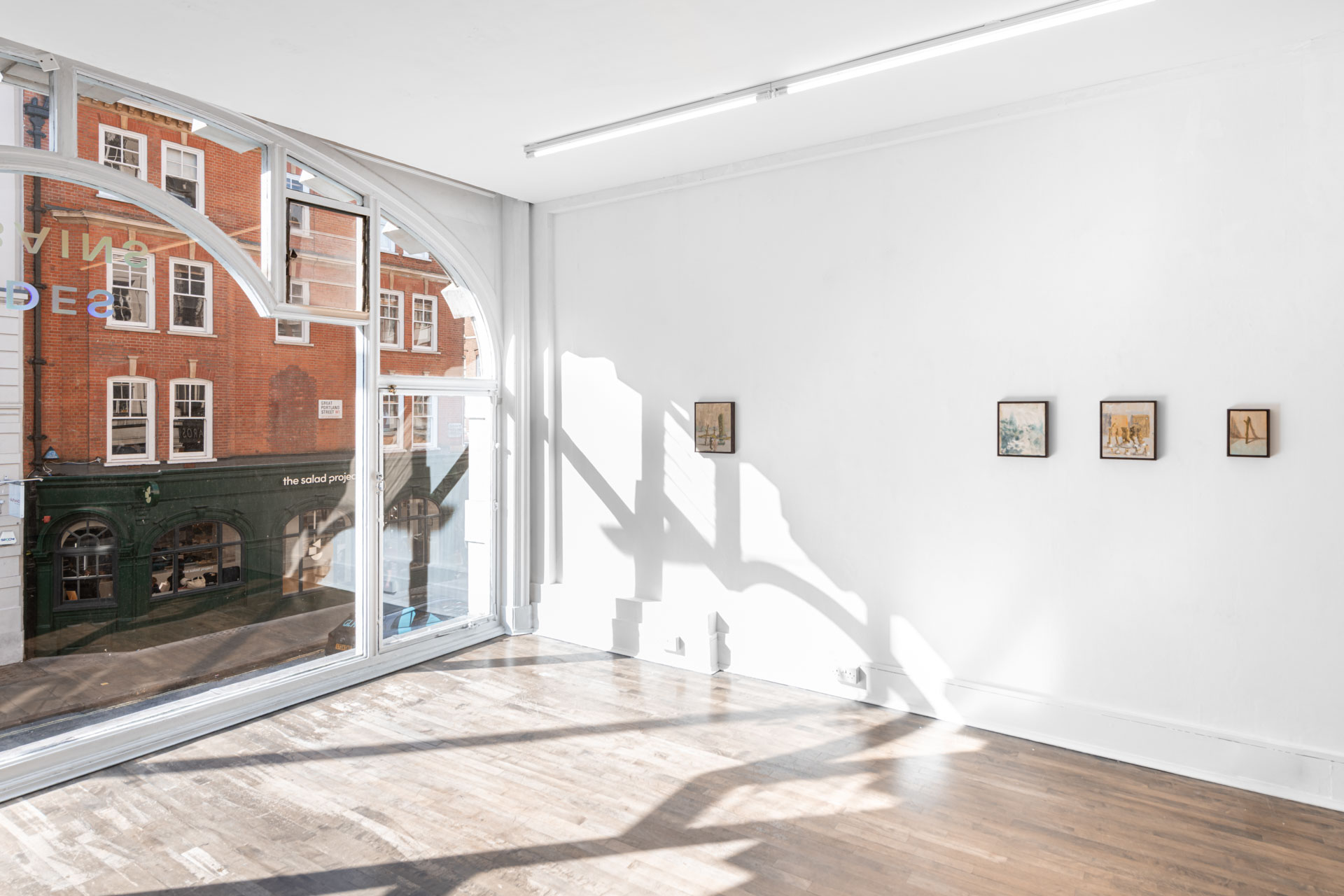Sebastián Espejo
WHAT IS LESS OR MORE THAN A TOUCH?
Curated by Philippa zu Knyphausen26 SEPTEMBER - 18 OCTOBER, 2025
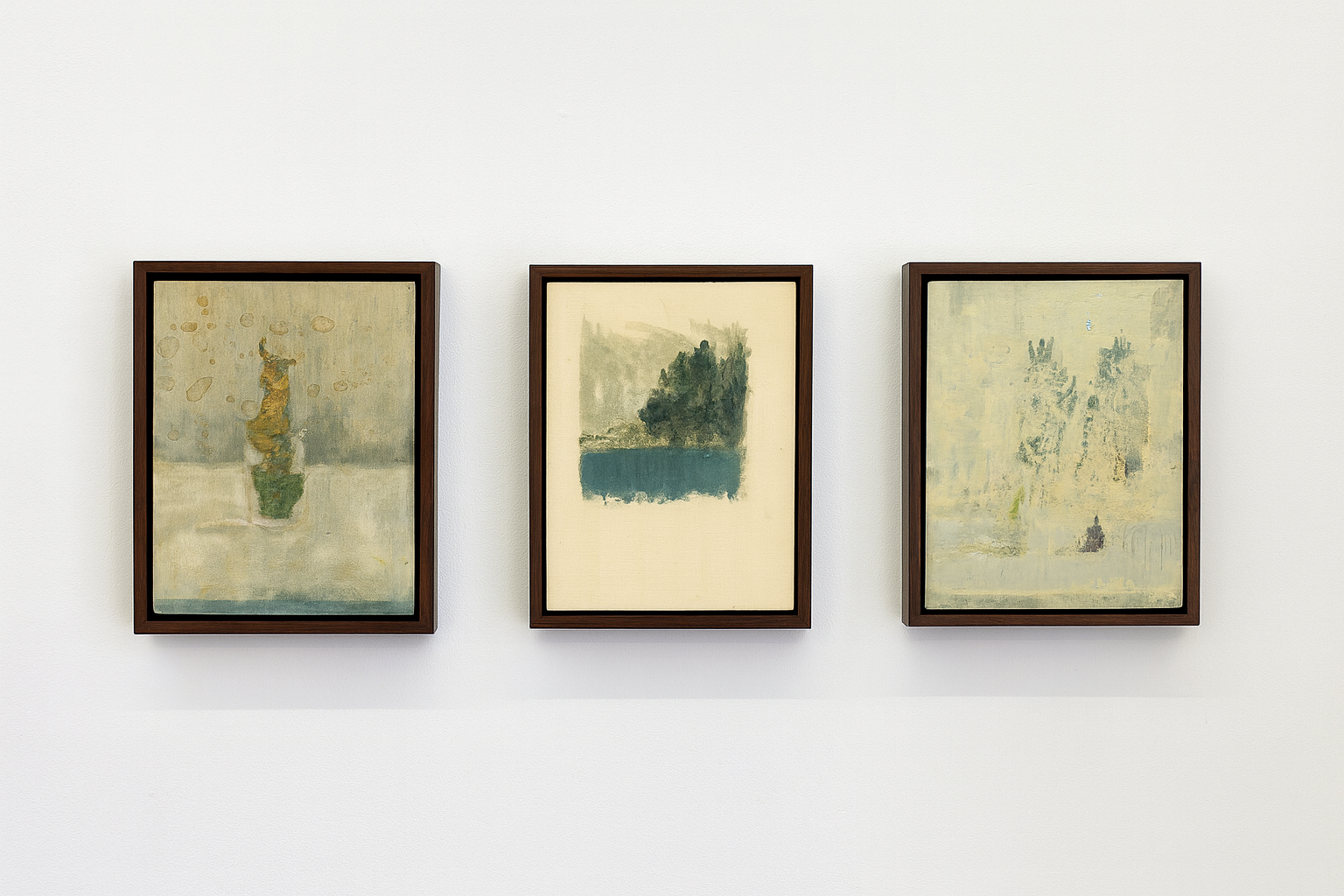
THE LICHEN OR THE DESIRE TO BE SEEN
There is a particular quality of lichen (λειχήν, leichēn) —a hybrid organism especially visible during winter months— that stands out above all others: it is relentless. Thriving in dark and humid environments, lichen needs a surface to survive, and when it finds the right conditions to thrive, it does not yield or adapt to the natural properties of its surroundings; instead, it slowly overtakes them.
Originally found on rocks, lichen has moved with the landscape, as Anna Tsing notes in Arts of Living on a Damaged Planet. In some regions, the purposeful relocation of these rocks has brought lichen to appear in unexpected places, such as cemeteries. Walking through the silent stillness of an old graveyard, one witnesses the many lichens growing over tombstones; an image Tsing connects to death, perhaps suggesting that their permanence mirrors our own transience.
Lichen grows in the forest’s forgotten corners. Similarly, natura morta —the classical still-life subject in painting history and a recurring theme in Sebastian Espejo’s work— takes on a darker, more distant quality when removed from its natural context and placed within a domestic sphere. For Espejo, painting lichens began in the dim and quiet of winter, when nature retreats. Drawn to their unique characteristics, he began to notice parallels between the organism and his own process: like lichen, a painter needs a surface to colonise; like lichen, a painter grows through contact, dependent on environment, medium, and context. And like the lichen, the painter seeks to be seen, to be acknowledged, to exist.
There is a particular quality of lichen (λειχήν, leichēn) —a hybrid organism especially visible during winter months— that stands out above all others: it is relentless. Thriving in dark and humid environments, lichen needs a surface to survive, and when it finds the right conditions to thrive, it does not yield or adapt to the natural properties of its surroundings; instead, it slowly overtakes them.
Originally found on rocks, lichen has moved with the landscape, as Anna Tsing notes in Arts of Living on a Damaged Planet. In some regions, the purposeful relocation of these rocks has brought lichen to appear in unexpected places, such as cemeteries. Walking through the silent stillness of an old graveyard, one witnesses the many lichens growing over tombstones; an image Tsing connects to death, perhaps suggesting that their permanence mirrors our own transience.
Lichen grows in the forest’s forgotten corners. Similarly, natura morta —the classical still-life subject in painting history and a recurring theme in Sebastian Espejo’s work— takes on a darker, more distant quality when removed from its natural context and placed within a domestic sphere. For Espejo, painting lichens began in the dim and quiet of winter, when nature retreats. Drawn to their unique characteristics, he began to notice parallels between the organism and his own process: like lichen, a painter needs a surface to colonise; like lichen, a painter grows through contact, dependent on environment, medium, and context. And like the lichen, the painter seeks to be seen, to be acknowledged, to exist.
In What Is Less or More Than a Touch?, Espejo presents paintings of various lichen species gathered from forests in North London, close to his home and studio. Removed from their natural setting and transformed into subjects, the lichens became, for him, a study in geographic dependence. In London, unlike in his hometown of Viña del Mar on the Chilean coast, lichen tends to grow facing north. This observation became a metaphor: the lichen, like the artist, orients itself with purpose, drawn toward a direction, animated by invisible energy.
Observation and attention to the environment have become Espejo’s enduring method; a way of expanding a constant, evolving practice. The title of this exhibition references a phrase from a Walt Whitman poem about the bodily ecstatic experience — something that can refer to a form of connection, whether with nature or with someone else. By bringing this exhibition to life, the lichen is not only present (even in its original shape and form), but also expands the ongoing connection that nature has with the practice of observation and painting.
Text by Philippa zu Knyphausen
Sebastián Espejo
(b.1990, Viña del Mar, Chile) lives in and works in London.
Sebastián Espejo’s artistic practice centres on painting as a form of attention, with a focus on exploring the language of painting, the natural world, living organisms, visual experience, and the perception of light. After graduating in Visual Arts from the Pontificia Universidad Católica de Chile, his work has been exhibited in numerous institutions and galleries across Chile, UK, USA, Taiwan and South Korea.
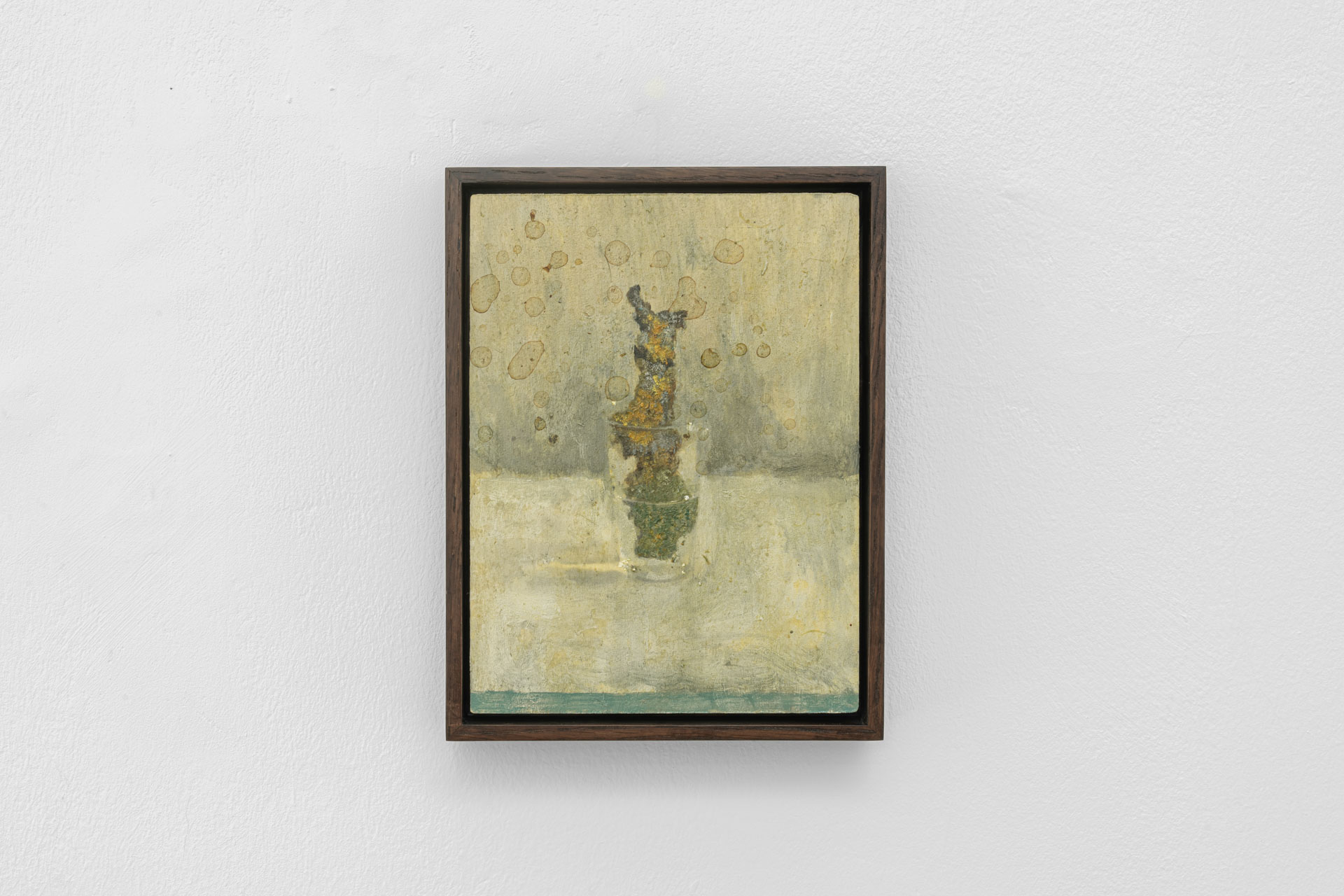
El arco, 2025
oil and wax on basswood
20 x 15 cm
![]()
oil and wax on basswood
20 x 15 cm
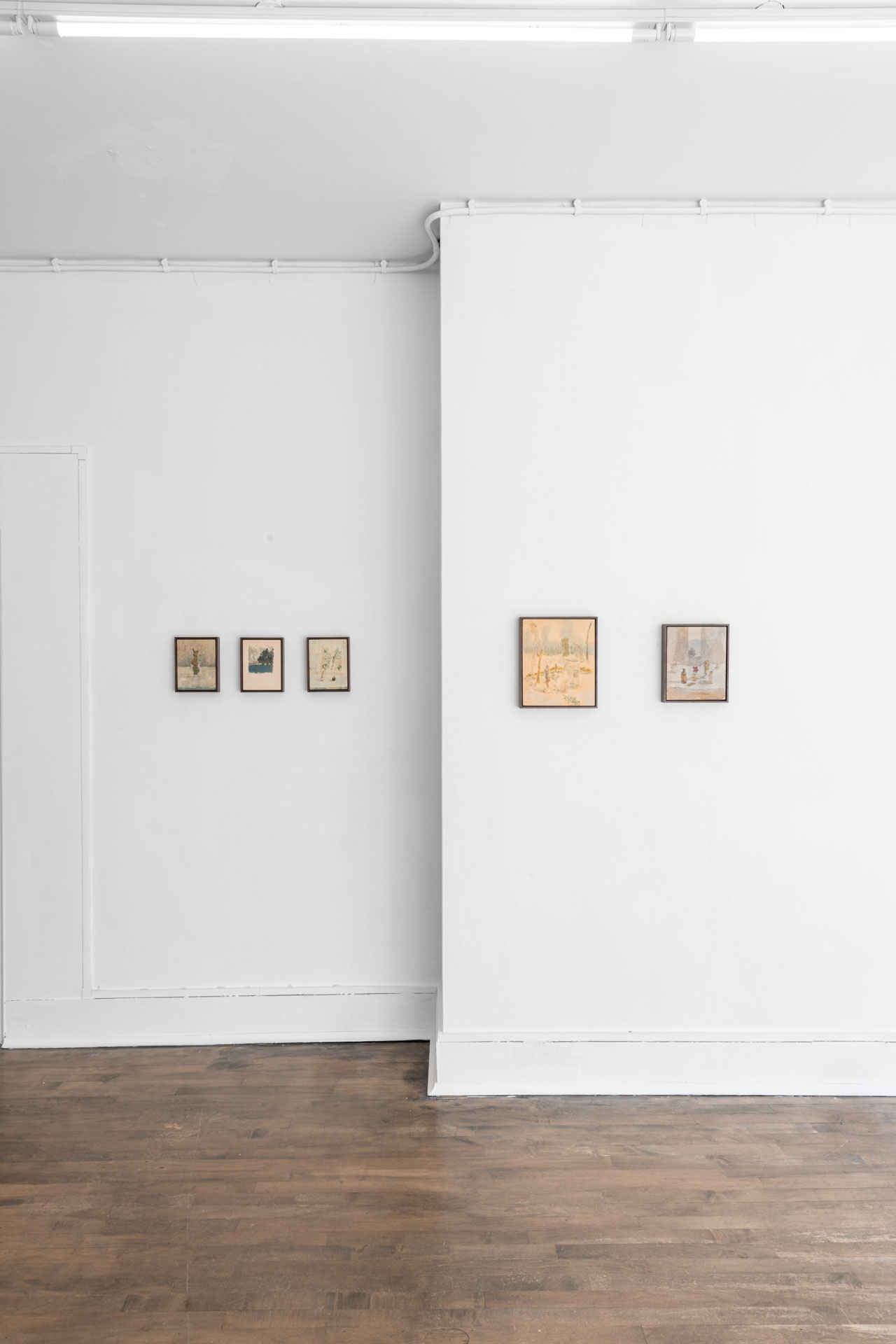
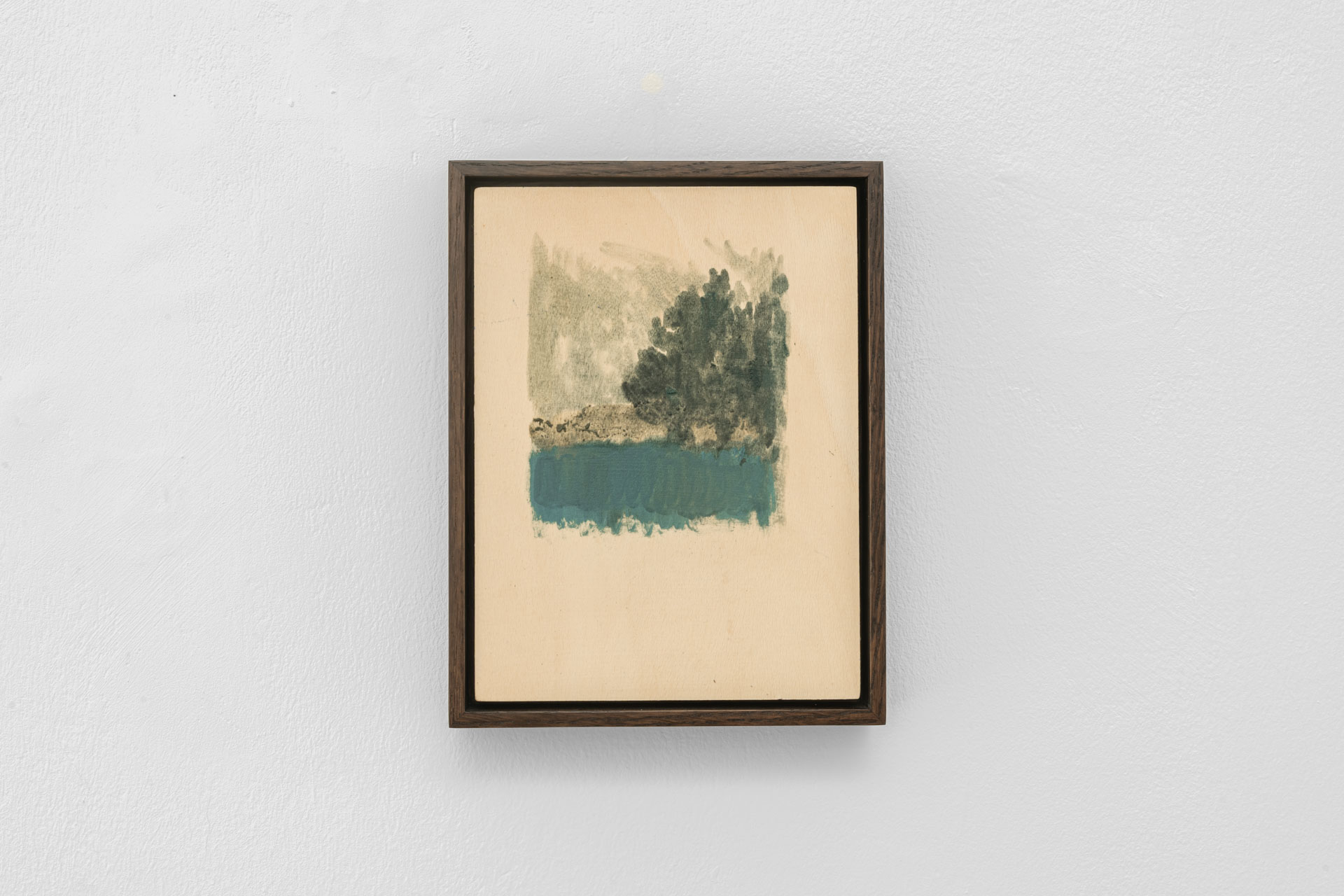
El Lado Sur del rio, 2025
oil on wood
20 x 15 cm
oil on wood
20 x 15 cm
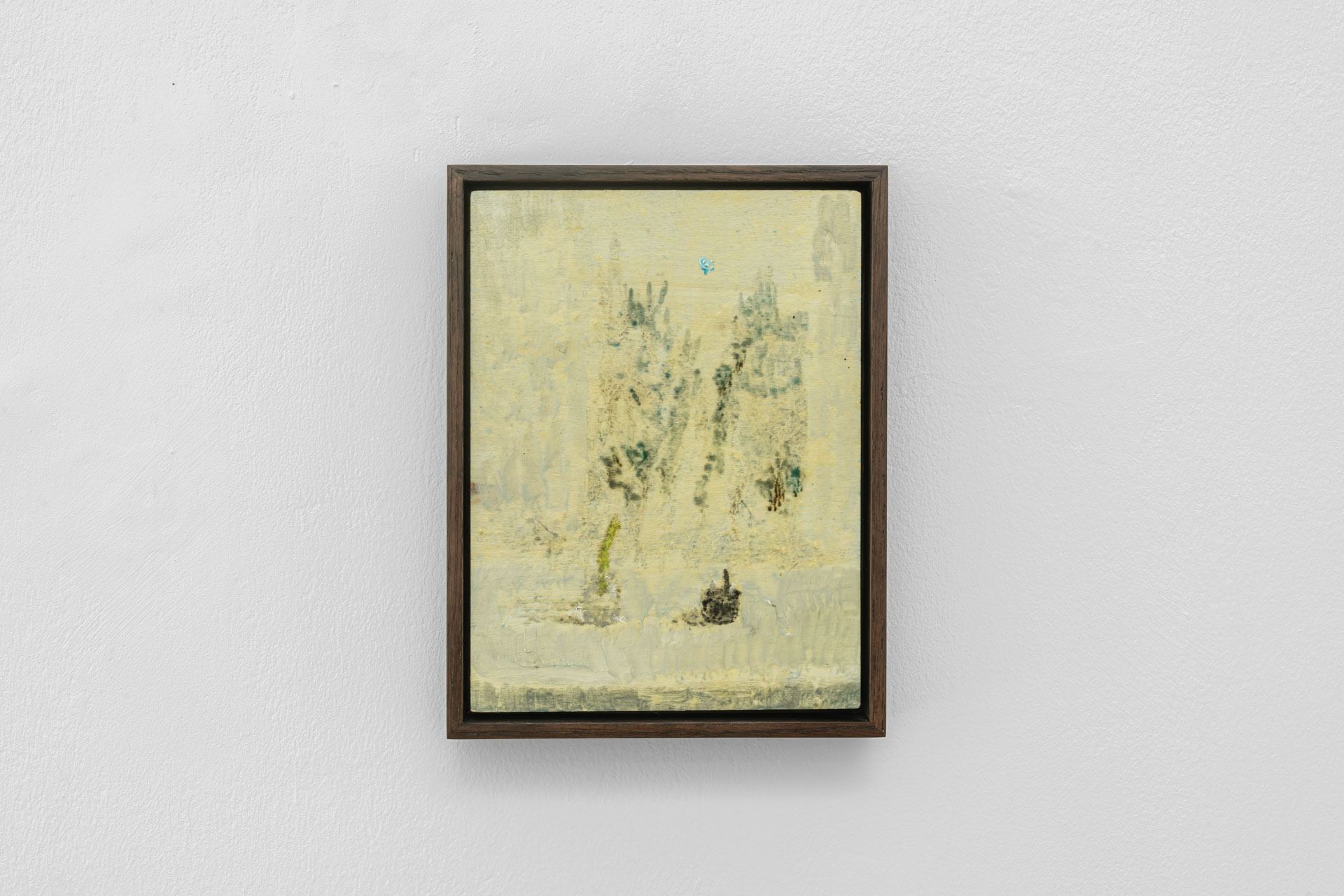
Lichen twig in glass vase and plug adapter with drawing, 2025
oil, varnish and wax on wood
20 x 15 cm
oil, varnish and wax on wood
20 x 15 cm
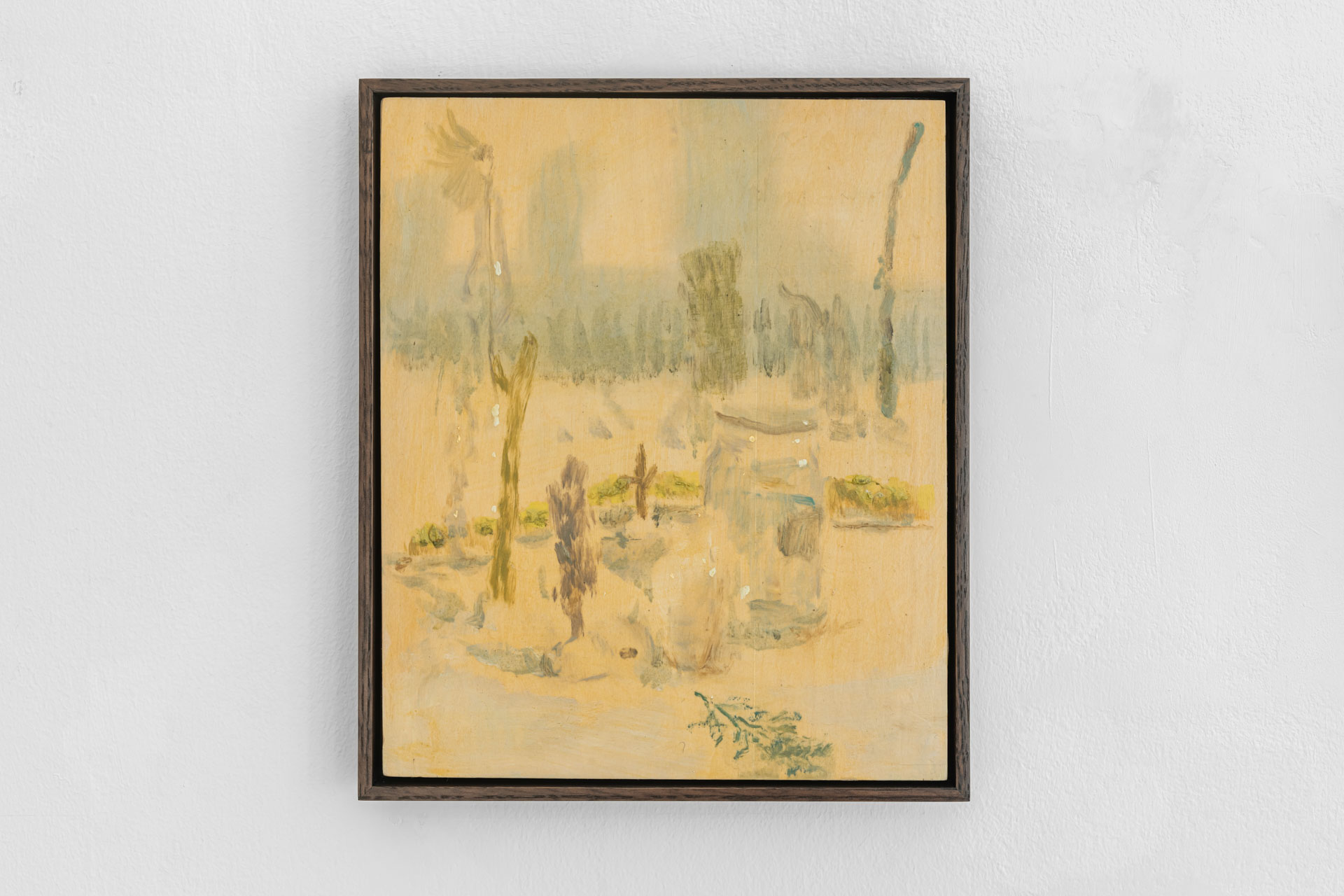
Stay in the shade, until you reach the rain, 2025
oil and wax on basswood
30 x 25 cm
oil and wax on basswood
30 x 25 cm
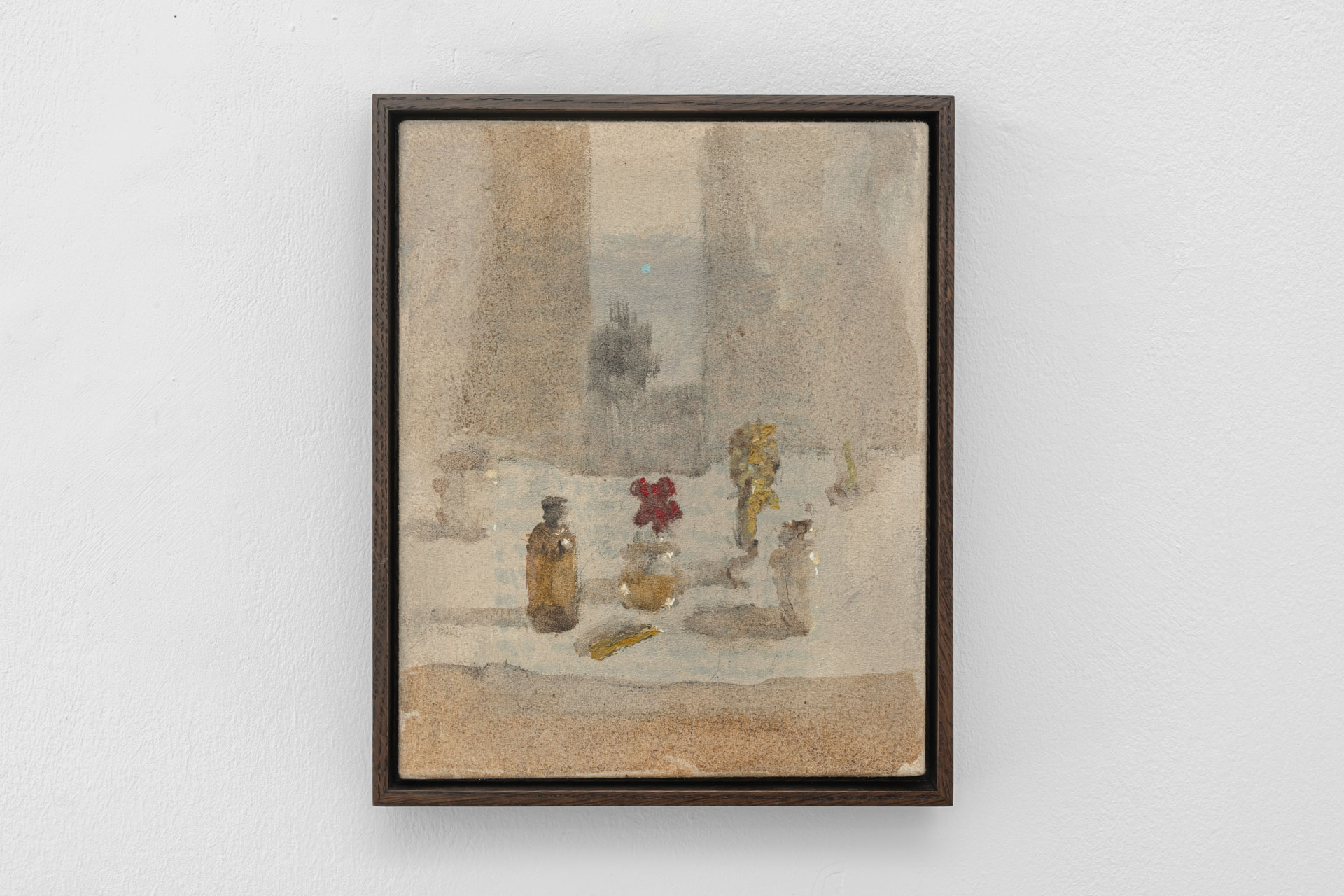
Drift out over things (both sides), 2025
oil, pen and wax on calico
25,5 x 20 cm
![]()
oil, pen and wax on calico
25,5 x 20 cm
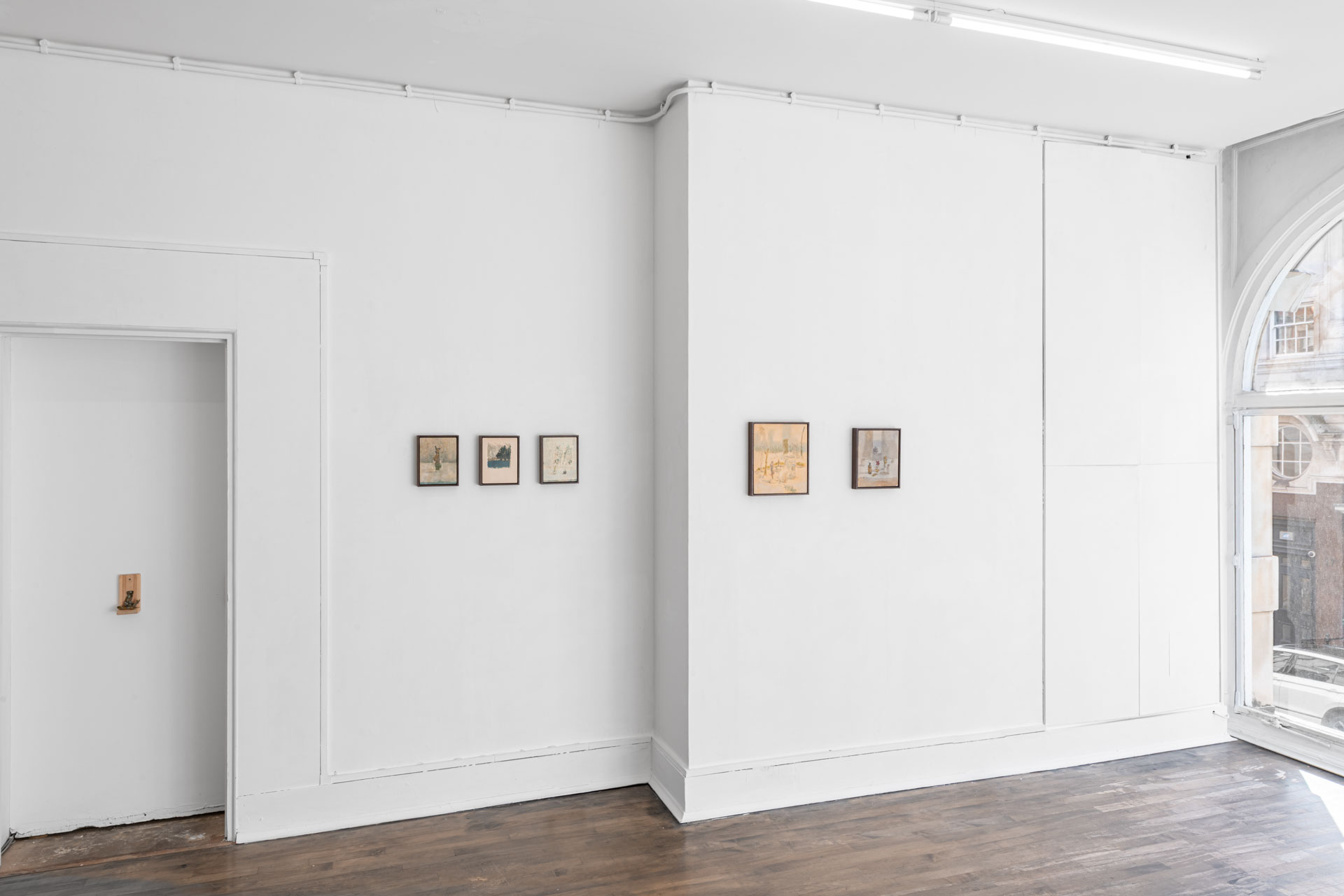
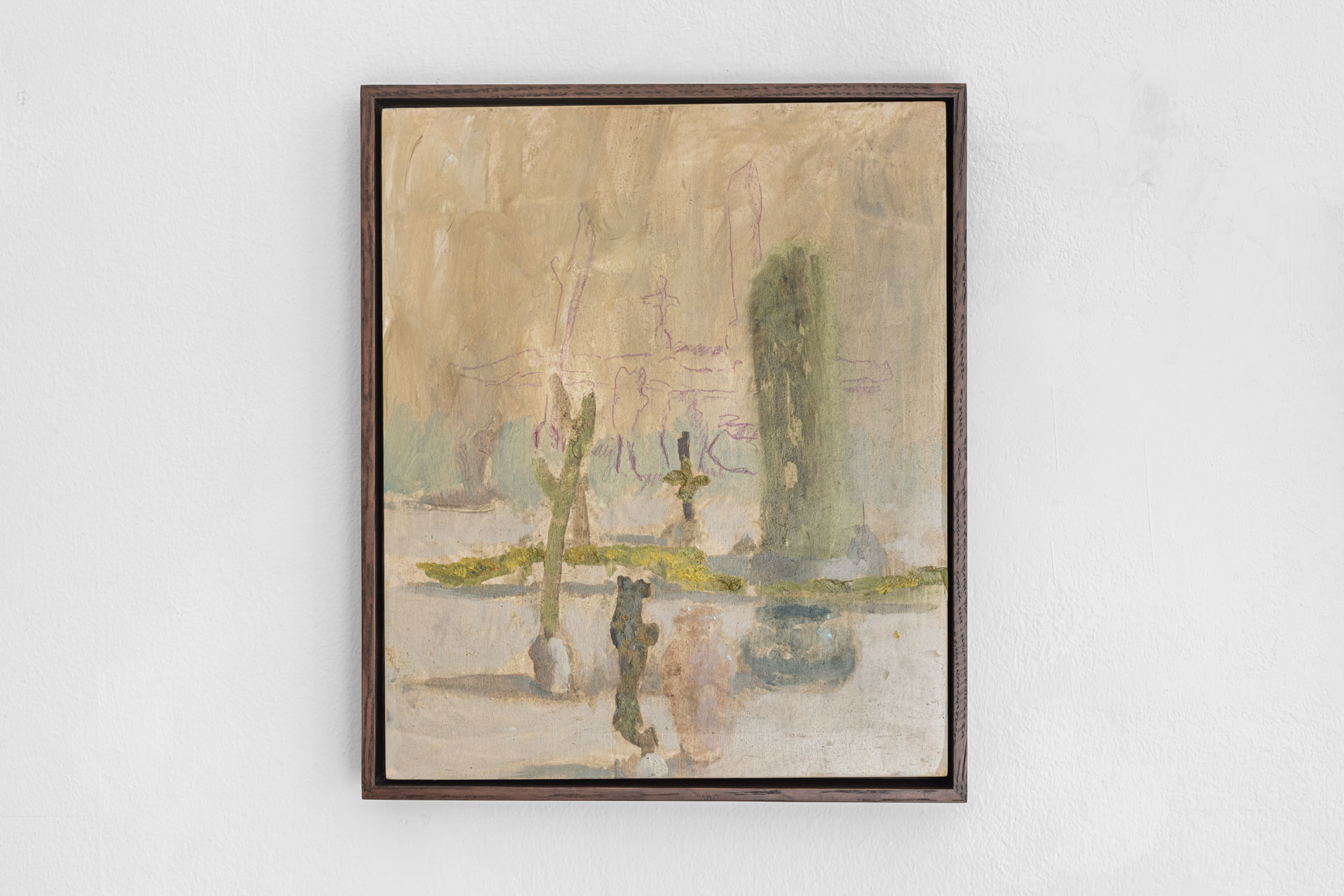
Composition, 2025
oil and pencil on wood
30 x 25 cm
oil and pencil on wood
30 x 25 cm
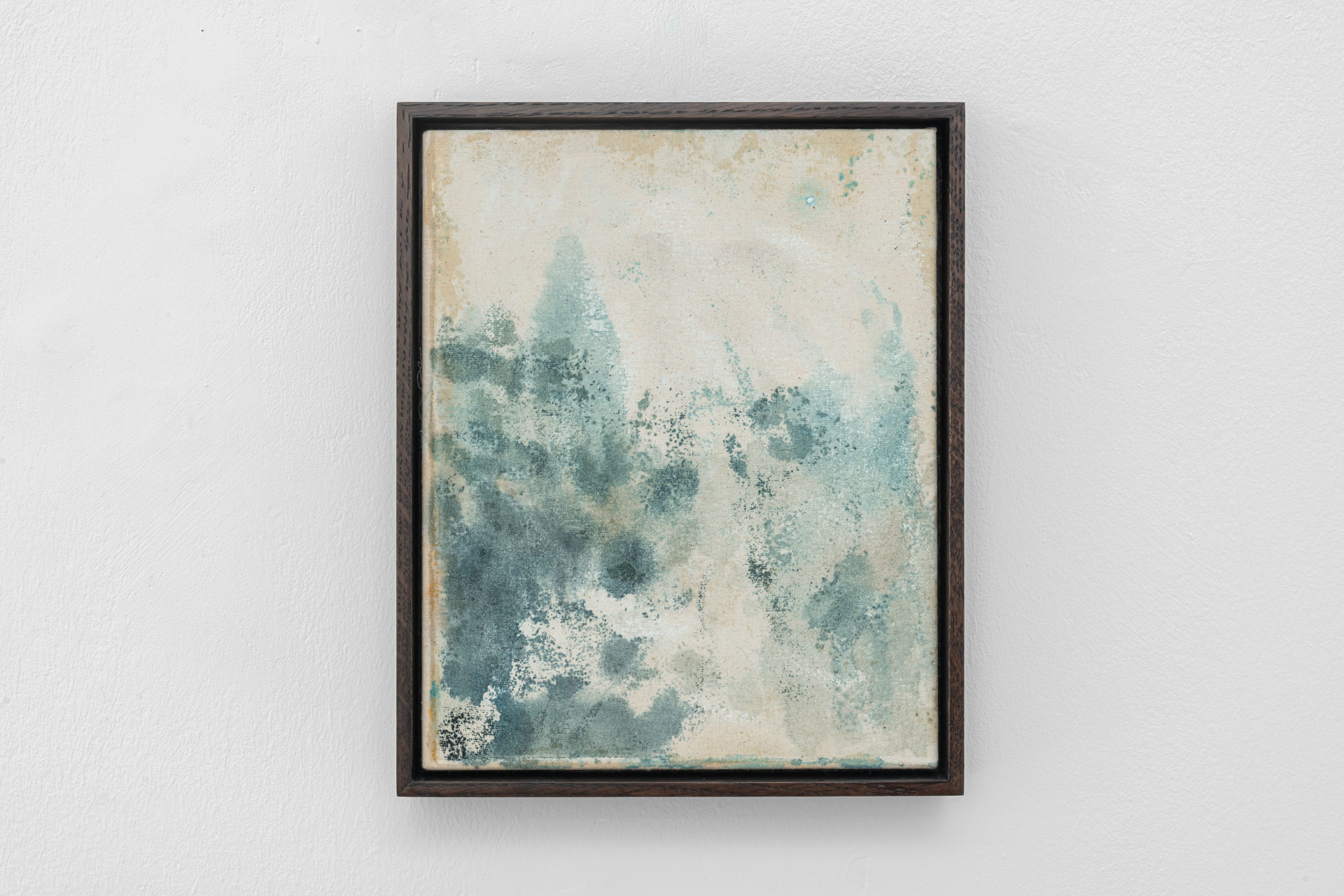
Dagenham Brook (both sides), 2024-2025
oil on calico
30 x 25 cm
oil on calico
30 x 25 cm
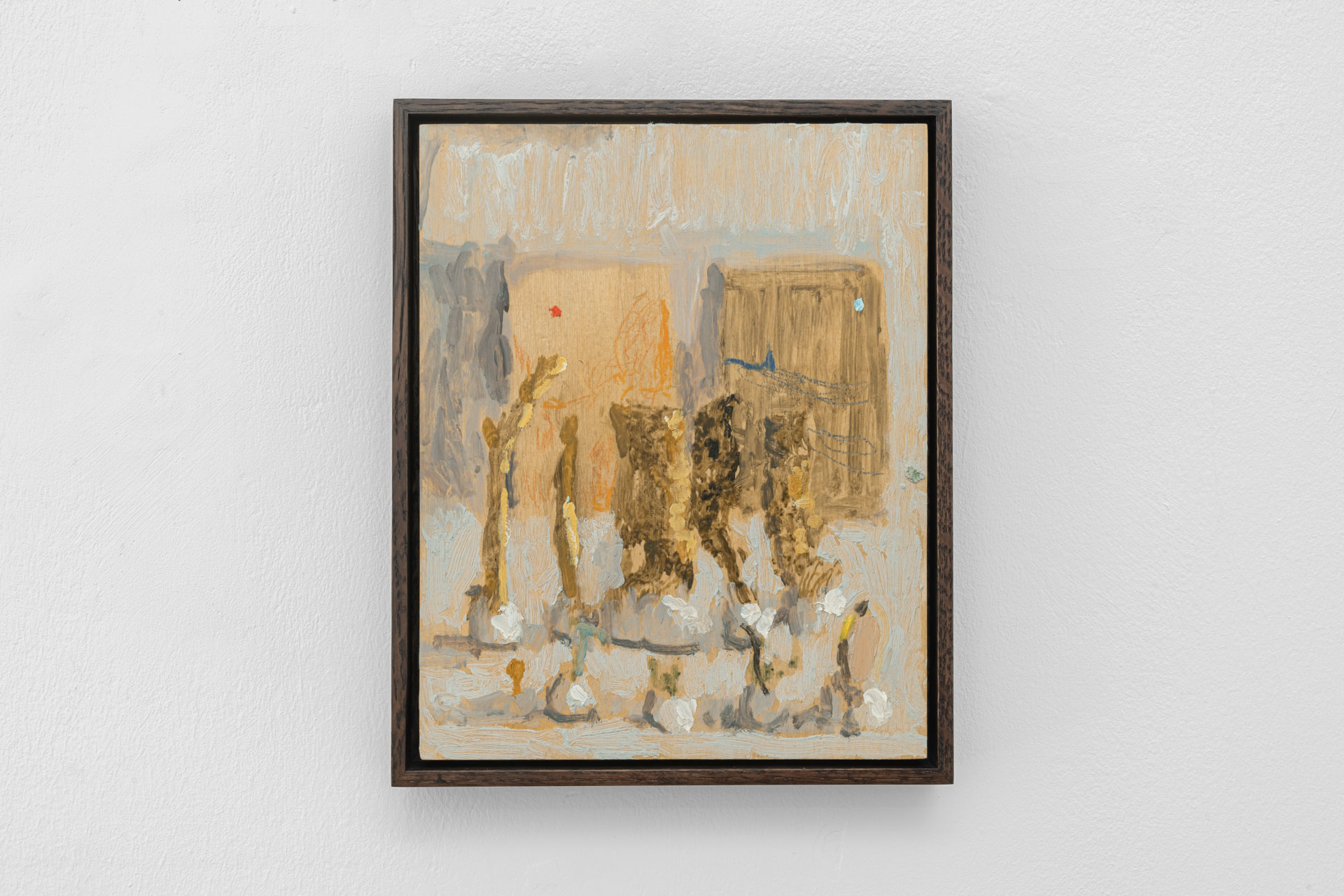
Taxa, 2025
oil pencil and wax basswood
25 x 20 cm
![]()
oil pencil and wax basswood
25 x 20 cm
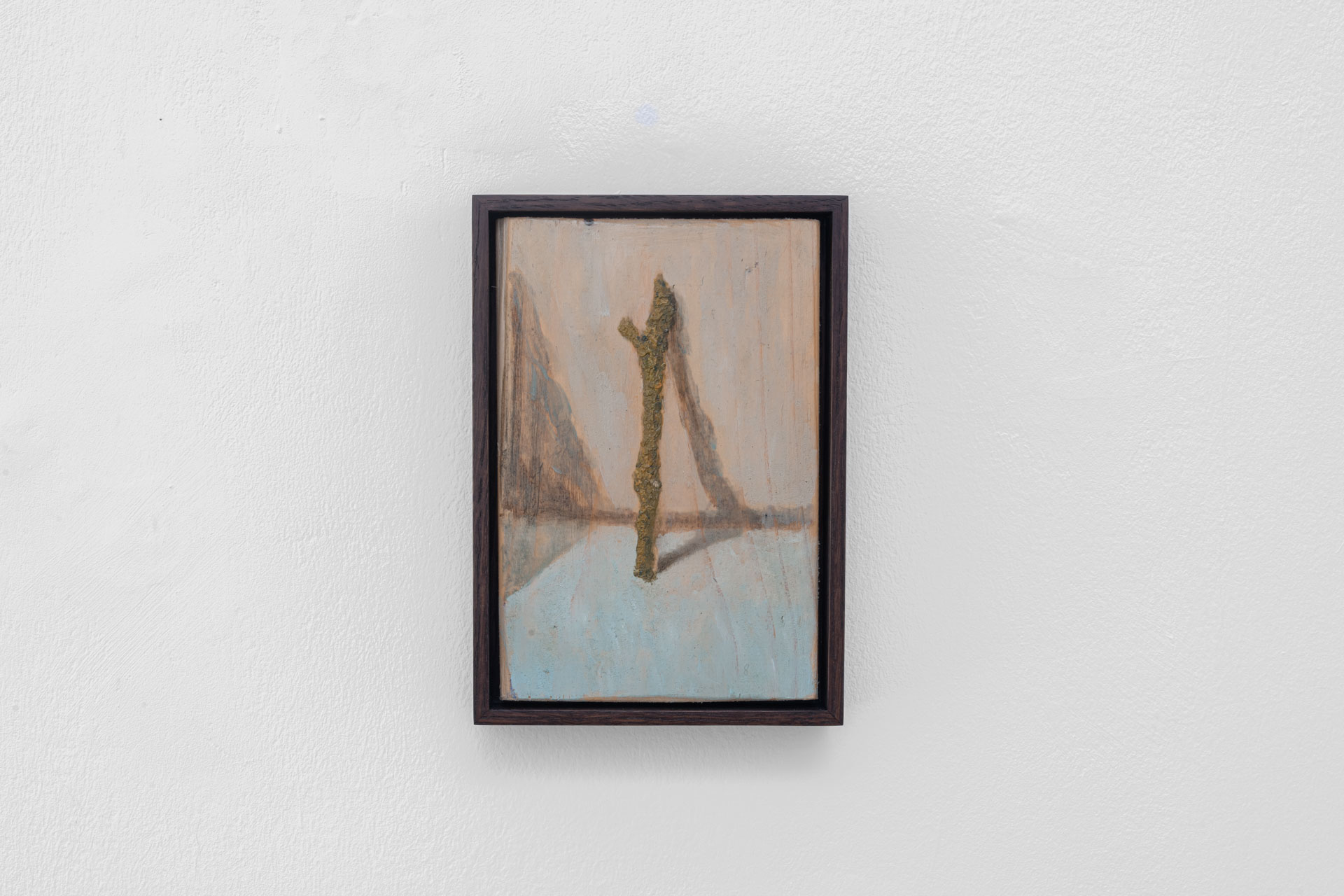
Biological force expands in time, 2025
oil on wood
18 x 12,5 cm
oil on wood
18 x 12,5 cm
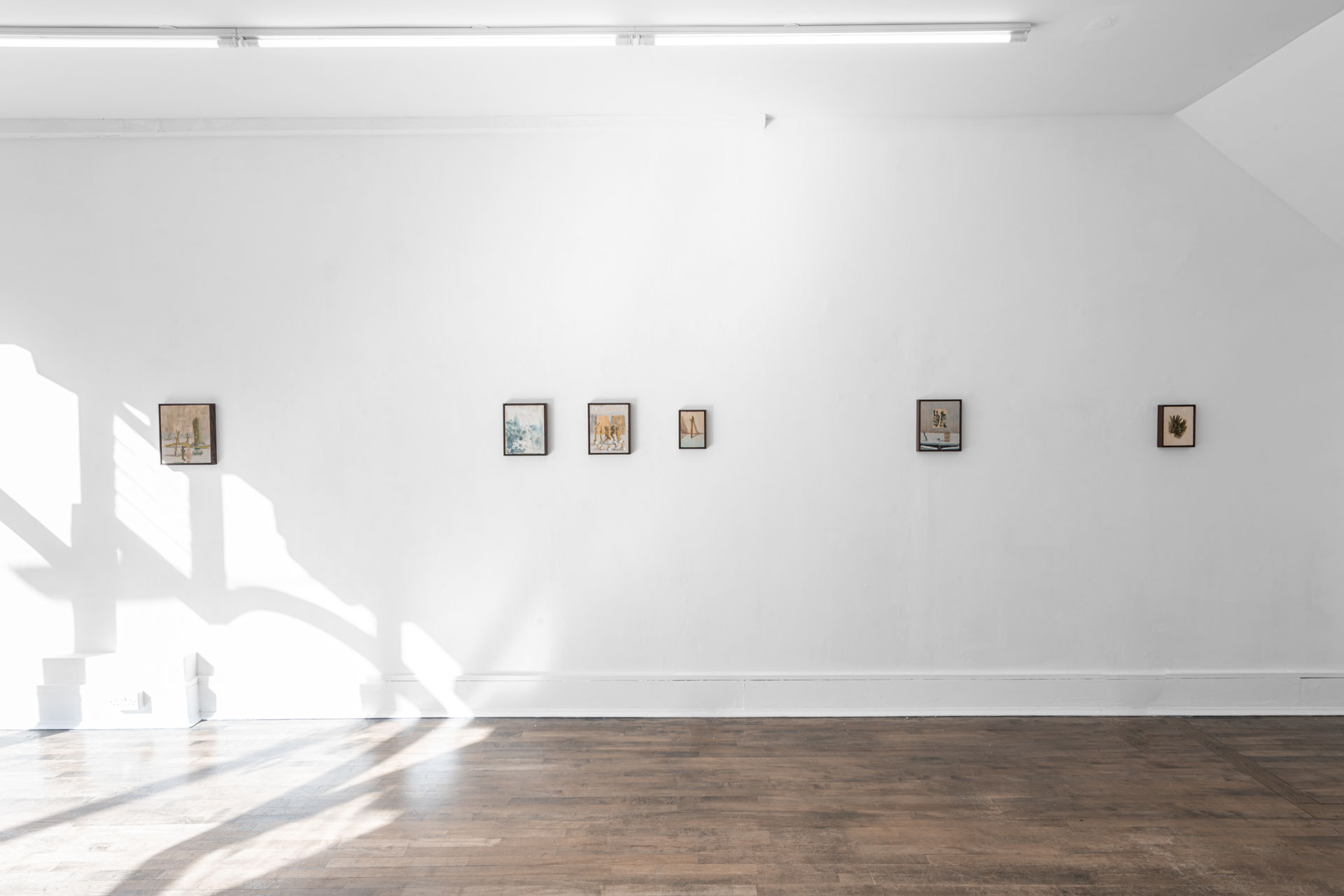
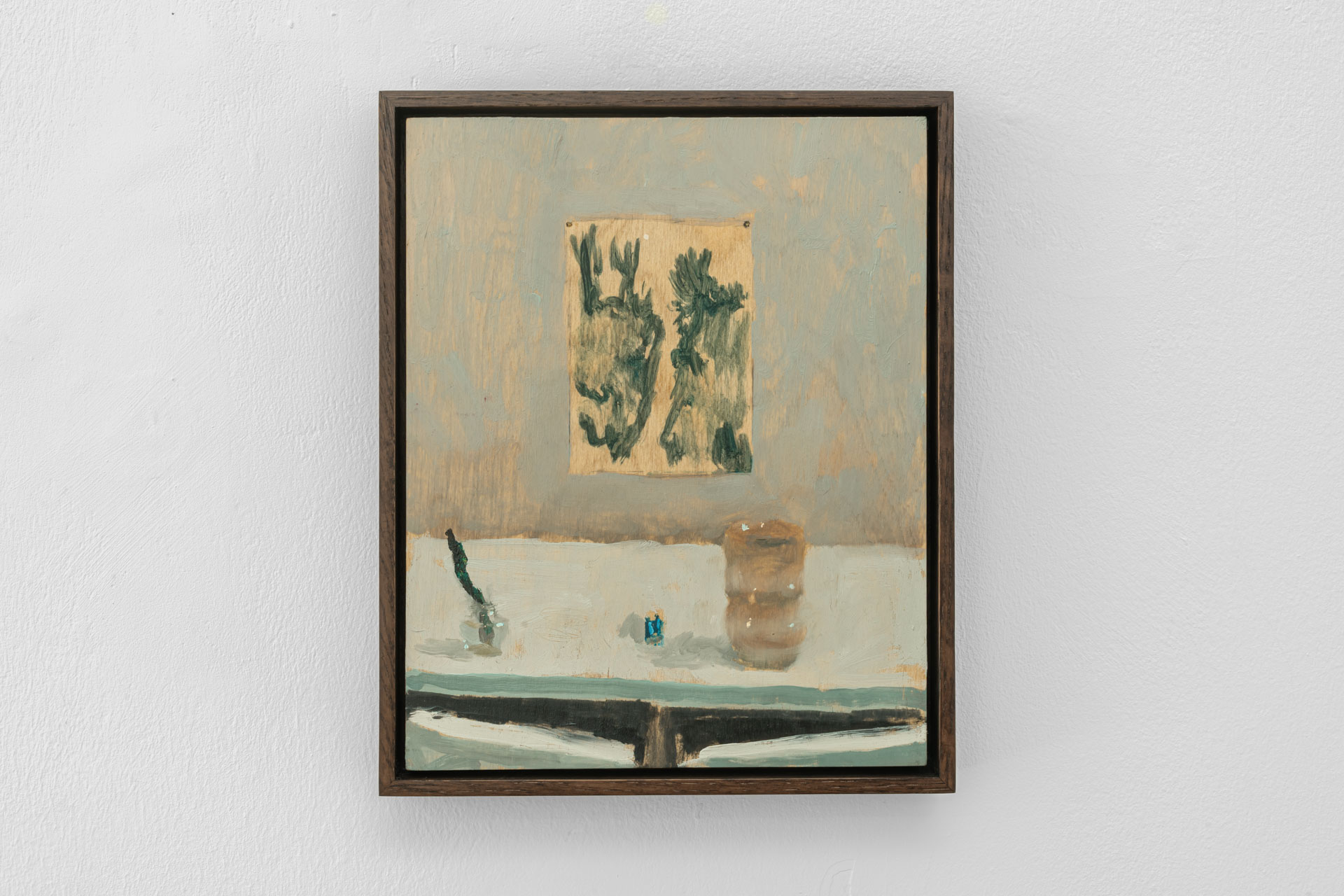
Una vara en el agua, 2025
oil and varnish on wood
25 x 20 cm
oil and varnish on wood
25 x 20 cm
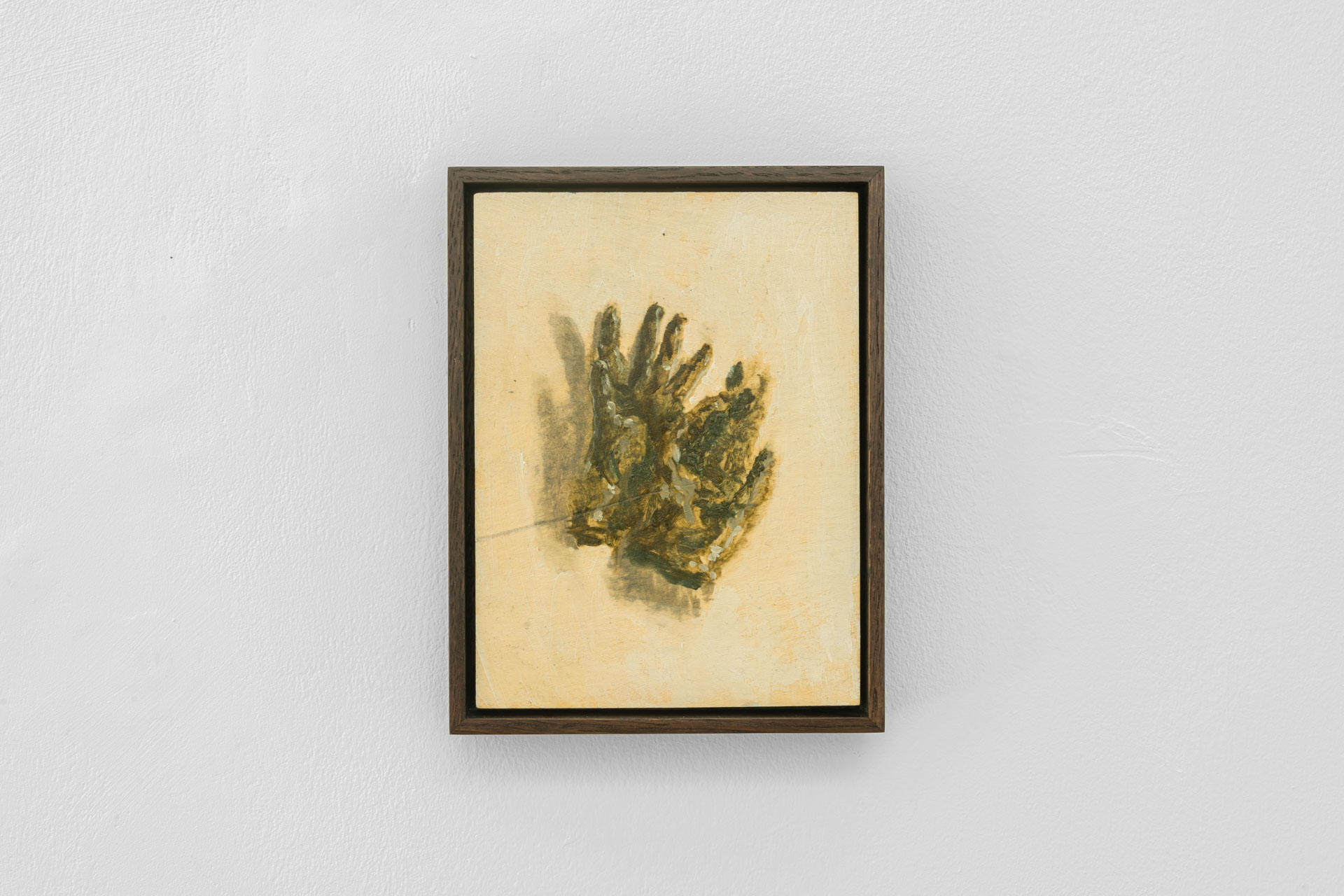
Sin título (Guantes), 2025
oil on wood
20 x15 cm
oil on wood
20 x15 cm
